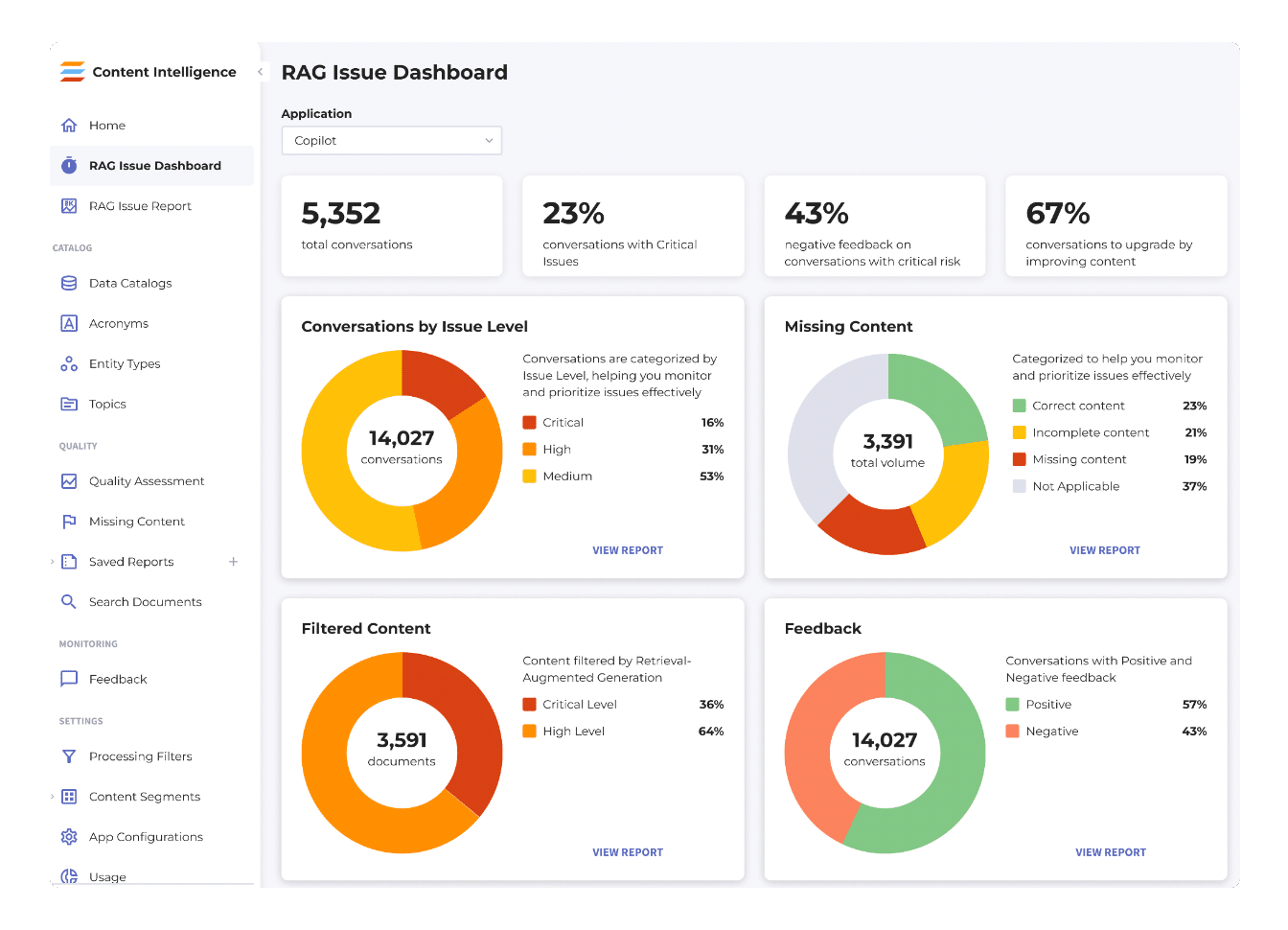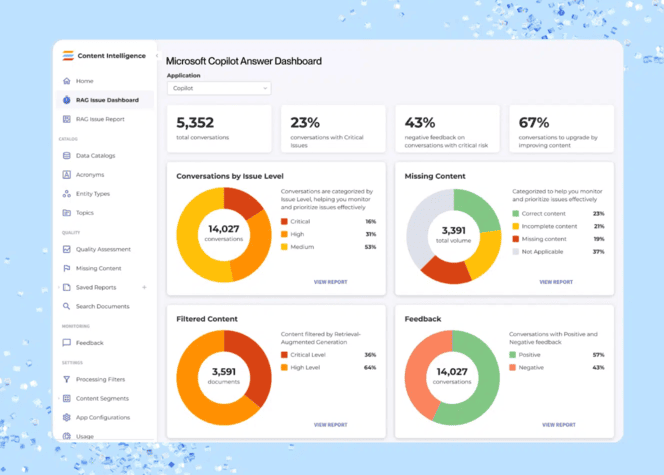Getting your SharePoint data AI-ready isn’t just about flipping a switch. It’s about taking a closer look at the data you already have and setting it up for success. Whether you’re aiming to streamline workflows, unlock actionable insights, boost the user experience, or simply make better use of the information at your fingertips, prepping your SharePoint data is a critical first step.
Why does it matter? Artificial intelligence tools rely on clean, organized, and accessible data to work their magic. But SharePoint, for all its strengths, often becomes a dumping ground for all kinds of files—some useful, others just clutter. Without structure and consistency, even the best AI systems can struggle to make sense of it all.
In this guide, we’ll break down the steps to get your SharePoint digital content into shape for AI. Think of this as your playbook for turning SharePoint from a digital filing cabinet into a goldmine for AI-driven insights.

Assessing Your SharePoint AI Data Quality
Before you can get the most out of AI’s advanced capabilities, it’s essential to know what’s actually in your SharePoint sites and whether it’s ready for the journey. Think of this as a “data checkup,” a way to evaluate how healthy and useful your data really is. This will set up SharePoint to be ready for AI language models.
Start with a Data Audit
The first step is a data audit. You want to take a broad look at all of the content types stored in SharePoint and ask: Is this data complete, consistent, and relevant?
Focus on understanding what information is most valuable, what’s outdated or redundant, and whether you have everything you need in place for future AI analysis. The more thorough the audit, the better prepared you’ll be to make your SharePoint data a reliable AI asset.
Identify Data Gaps and Inconsistencies
Next, look for the usual culprits: duplicate entries, missing metadata, or scattered pieces of information that disrupt consistency.
Gaps and inconsistencies make it hard for AI to identify patterns or deliver valuable insights. By catching these issues now, you’re making sure that AI has a clean and well-organized data foundation to work with.
Evaluate Metadata Usage
Lastly, don’t overlook metadata. Good metadata acts like a roadmap for AI, guiding it to the information that matters. The more structured and descriptive your metadata, the easier it is for AI to understand and categorize data effectively.
Spend time ensuring that metadata is complete and accurate across your SharePoint files. The goal here is to set a clear structure that makes information retrieval smoother and more reliable.
Organizing SharePoint Content for AI Accessibility
Once you’ve assessed your SharePoint data quality, the next step is to organize it in a way that’s easy for AI to navigate.
Think of it like setting up a library: Everything has its place, making it simple for anyone—or in this case, any AI—to find exactly what they need. A clean, logical structure plays a critical role in making your SharePoint data easier to understand and work with.
Implement Clear Folder Structures
Start by establishing a logical folder structure. This isn’t just about tidying up—it’s about creating an intuitive map that helps AI systems categorize and understand relationships between different pieces of content.
Consider organizing folders by project, department, or document type. Consistent folder structures reduce clutter and make it easier for AI tools to locate relevant data, boosting both accuracy and efficiency.

Label Content Intelligently
A clear naming convention is a game-changer when it comes to giving AI access to content. Instead of a mishmash of cryptic file names, use standardized labels that quickly tell anyone (or any system) what’s inside.
For instance, instead of “Doc12345_final,” try something like “Marketing_Q1_Report_2024.” This simple change helps AI understand the file’s content and context, speeds up data retrieval, and reduces the chances of confusion.
Enhance Document Metadata
Finally, it’s worth spending extra time on metadata. Go beyond basic tags and think about the keywords that describe the document’s purpose, audience, or any unique aspects. Adding these keywords and detailed descriptions will pay off when AI starts processing your data, giving it the information needed to deliver more accurate results.
Enforcing Data Hygiene Practices
Just like regular maintenance keeps equipment running smoothly, data hygiene keeps your SharePoint in top shape for AI. Without consistent upkeep, data can quickly become outdated, inaccurate, or just plain messy—all things that can throw off AI analysis.
So how do we ensure that AI has access to fresh, relevant information?
Establish Regular Data Cleansing Routines
Periodic data reviews and cleanups go a long way in keeping your data accurate and reliable. Schedule these reviews at regular intervals—quarterly or biannually—to go through your SharePoint content, clear out duplicates, and correct any errors. Think of it as a “spring cleaning” for your SharePoint that keeps it running smoothly for AI use.
Set Expiry Dates on Data
Some documents simply lose relevance over time. Setting expiration dates for certain types of data—like temporary files, drafts, or event-related documents—reduces “noise” in your SharePoint. This helps AI models by cutting down on irrelevant information that can skew results.
When you routinely remove outdated documents, you’re left with data that’s more useful, allowing AI to zero in on what really matters.
Securing SharePoint Data for AI Processing
With AI tools diving into your SharePoint data, security becomes a top priority. It’s essential to protect sensitive information while still giving AI access to the data it needs to function. Setting up the right security measures helps you balance data privacy with AI processing, building a foundation of trust for both users and stakeholders.
Manage Access Controls
Start by establishing clear access controls. Not everyone needs access to every file, and the same goes for AI systems. By setting authorized users with specific access to content, you ensure that sensitive data is only accessible to those who genuinely need it.
This approach not only keeps your data secure but also helps AI avoid unnecessary information, which improves accuracy. Think of access controls as a way to streamline AI’s focus and direct it to the most relevant data without exposing sensitive details.
Ensure Compliance with Data Privacy Regulations
Data privacy laws like GDPR or HIPAA aren’t just legal requirements—they’re essential for responsible data management. When you’re working with personal or sensitive data, make sure your SharePoint setup aligns with these regulations, especially if AI will process this data.
Implementing compliance features and privacy measures such as data anonymization and strict access protocols helps safeguard user privacy while allowing AI to perform its tasks. Keeping your SharePoint in compliance not only protects individuals’ rights but also shields your organization from regulatory risks.
Tracking AI Readiness Progress
Once you’ve taken steps to prepare your SharePoint data for AI, the next part is keeping track of your progress. By setting up clear metrics and regularly reviewing AI performance, you ensure that your data remains in top shape and that AI outputs stay accurate and actionable. Tracking progress is an ongoing process that helps you adapt and improve.
Establish Key Metrics for Data Readiness
Start by defining key metrics, or KPIs, that reflect the effectiveness of your data preparation efforts. Focus on measurable indicators like data accuracy, metadata completeness, and retrieval speed. Setting these KPIs gives you a baseline to measure improvements and helps pinpoint areas where your SharePoint data preparation might need further tuning.
Monitor AI Model Performance
It’s not enough to set up your data and let AI run—you also need to keep an eye on how well it’s performing. Regularly review AI outputs to check for accuracy, relevance, and consistency. Look for any patterns in errors or areas where insights fall short. These reviews provide valuable feedback for refining both your data and the AI models themselves.

The Ongoing Process of AI Data Readiness
Getting your SharePoint data AI-ready isn’t a one-and-done task—it’s an ongoing journey. As AI tools and capabilities evolve, so too should your approach to data management. Regular reviews, routine adjustments, and a commitment to best practices keep your SharePoint data clean, organized, and relevant for AI.
By following these steps, you’re setting up a solid foundation for AI to deliver real value from your SharePoint content. Think of each process—whether it’s data cleansing, securing access, or tracking performance metrics—as a way to get closer to unlocking AI’s potential.




